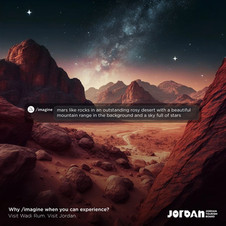"Taste Can't Wait" until it's "Reassuringly Expensive"
- Arya Kastwar
- Jul 20, 2024
- 3 min read
Advertising. An industry so saturated with ingenious creativity yet never seeming to run out of room for ideas unexplored. Over the course of about 20 months of diving head-first into the sea of advertising relics, Good Ads Matter has come across several campaigns that leave us thinking if great art borrows from, and in return, inspires great art or if creativity is, after all, only recyclable to an extent.
Recently, we shared Coca-Cola’s latest print ad, “Taste Can’t Wait”. What we thought was a creative and witty campaign, a reincarnation of another timeless and iconic piece of work from over two decades ago, was soon met with disappointment and criticism by most, if not all.
Why? Let’s look into it.
Coca-Cola’s “Taste Can’t Wait” 2024 & Stella Artois’ “Reassuringly Expensive” 1999
Yup.
Believe it or not, they are two different campaigns. Hahaha jokes aside, now what has worked for Coca-Cola and what hasn’t?
For Stella Artois’ criminally brilliant Cannes Lions Grand Prix-winning ad campaign that truly was revolutionary back in 1999, the idea was simple, that the brand is premium. Nothing at all to do with taste directly, the grandiosity of which is only established as a by-product. The chipped surfaces here do not signify that the “taste cannot wait”, but rather announces that Stella Artois is “reassuringly expensive”, chipping any surface that is rubbed against it, even a damn Bugatti.
For Coca-Cola on the other hand, this campaign that looks eerily similar to the former, has got everything to do with the taste. In fact, nothing at all to do with how expensive and luxurious it is. Because it is not. Can two brands with completely different, if not polar, messages communicate their idea through the same visual representation down to every detail? As many of our followers have observed the answer to this question––“Coca-Cola has completely missed the mark.”
What had been a bold move for Stella Artois, over a span of 20 years, has simmered down to becoming an inspiration for another brand to shoplift. While some comments on our LinkedIn post were in vehement agreement, there were many that loved both the ads as they are.
Trends of lending and borrowing in creative advertising materialise in various forms, ebbing and flowing neatly like tides of the ocean, leaving behind no murmur among the masses. Before we realise, another trend has already taken over by storm. This volatility, we suppose, is what pushes creativity further, keeping us all on our toes, awaiting the next big thing. Creating the next big thing.
While some brands, especially NGOs that fight to preserve the environment, have milked out every possible facet of the advent of artificial intelligence that can tell a good story….
Others have been busy juxtaposing their brands over others to either initiate pleasant camaraderie or establish superiority and assert dominance––in a quite confrontational way at that.
Needless to say, where there’s smoke there’s fire, and where there’s fire, there’s McDonald’s and Burger King with their marketing genius-cum-sibling rivalry––doing both of the above in a single shot! Don’t we all love to see it?

Another unmissable moment of brands borrowing from brands is the text placement on print ads that Heinz first revealed in its campaign that, ironically, derived the message that brands, in fact, borrow from brands. The iconic “Even When it isn’t Heinz, it has to be Heinz” statement went on to become a template in itself for print ads to follow. Are we complaining? Absolutely not!

How it started
How it’s going
All of these observations lead us to believe that advertising, ultimately, is an art of learning from each other (with due credit, of course, that makes up the crux of it). There remains, however, a fine line where inspiration ends and purloin begins. How often do you think this line is crossed?



























